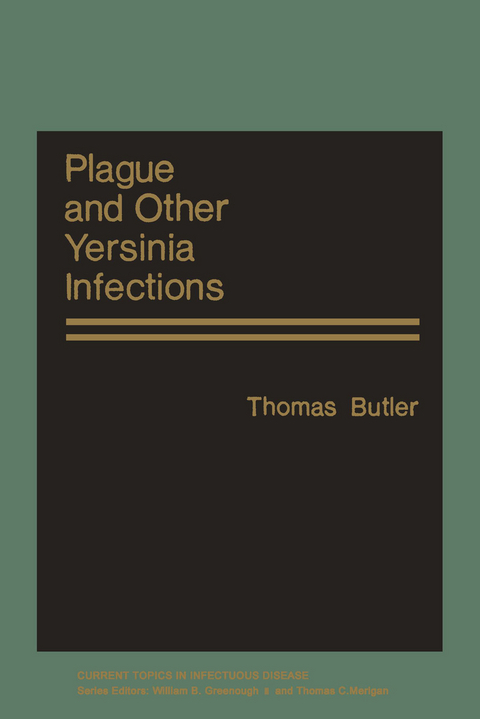
Plague and Other Yersinia Infections
Springer-Verlag New York Inc.
978-1-4684-8424-3 (ISBN)
Yersiniae were frequently dis- covered in persons with diarrhea and acute abdominal pain simulating ap- pendicitis. This discovery sparked a worldwide surge of scientific interest in the genus Yersinia. Previous writings about the yersiniae have rarely considered plague and nonplague yersiniae together. Diseases caused by these bacteria, although their epidemiological patterns and clinical pictures are very different, have some striking similarities.
1. Introduction.- 2. Discovery of the Organisms.- 2.1. Life of Alexandre Yersin (1863–1943).- 2.2. Nomenclature.- 2.3. History of Yersinia enterocolitica and Yersinia pseudotuberculosis.- 2.4. The Life and Work of K. F. Meyer (1884–1974).- References.- 3. Epidemiology.- 3.1. Plague.- 3.2. Yersinia enterocolitica Infection.- 3.3. Yersinia pseudotuberculosis Infection.- References.- 4. Clinical Syndromes and Pathology in Humans.- 4.1. Plague.- 4.2. Yersinia enterocolitica Infection.- 4.3. Yersinia pseudotuberculosis Infection.- References.- 5. Pathogenesis and Toxins.- 5.1. Plague.- 5.2. Yersinia enterocolitica Infection.- 5.3. Yersinia pseudotuberculosis Infection.- References.- 6. Diagnosis and Treatment.- 6.1. The Diagnosis of Plague.- 6.2. Diagnosis of Yersinia enterocolitica and Yersinia pseudotuberculosis Infections.- 6.3. Treatment of Plague.- 6.4. Treatment of Yersinia Infections.- References.- 7. Prevention and Control.- 7.1. Control of Plague.- 7.2. Control of Other Yersinia Infections.- References.
| Reihe/Serie | Current Topics in Infectious Disease |
|---|---|
| Zusatzinfo | 30 Illustrations, black and white; XII, 220 p. 30 illus. |
| Verlagsort | New York, NY |
| Sprache | englisch |
| Maße | 152 x 229 mm |
| Themenwelt | Medizin / Pharmazie ► Medizinische Fachgebiete |
| Studium ► Querschnittsbereiche ► Infektiologie / Immunologie | |
| ISBN-10 | 1-4684-8424-9 / 1468484249 |
| ISBN-13 | 978-1-4684-8424-3 / 9781468484243 |
| Zustand | Neuware |
| Haben Sie eine Frage zum Produkt? |
aus dem Bereich


